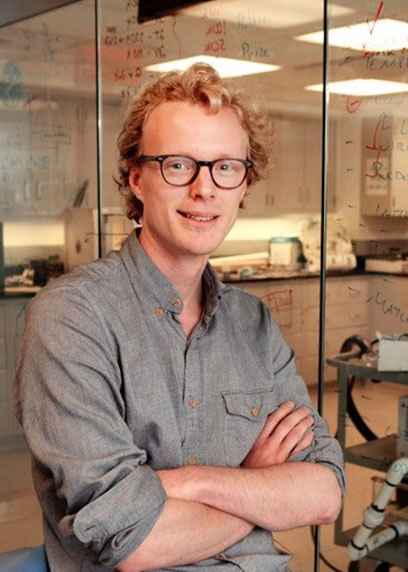

Marcus Hultmark
Princeton University, United States
“Revealing the details of wind turbine wakes through high Reynolds number experiments”
Wind turbines and wind farms present unique challenges, fluid mechanically, as they combine extremely high Reynolds numbers with additional time scales imposed by the rotation and three-dimensional effects. This implies that resolved numerical solutions are too computationally expensive and investigations in conventional wind tunnels are impossible due to the flow speeds and rotational rates needed in order to satisfy the dynamic similarity requirements. At Princeton, we achieve the conditions a large wind turbine experiences, experimentally, by compressing the air around it up to 238 bar. This yields conditions similar to those experienced in the field on a model that is only 20cm in diameter. The extremely high Reynolds number wake is investigated using the nano-scale thermal anemometry probe (NSTAP), enabling well-resolved turbulence measurements, both temporally and spatially. The morphology of the wake, including the evolution of the tip vortices and turbulent structures is characterized and the effect of Reynolds number, free-stream turbulence, and rotation studied.
Short CV
Marcus Hultmark is associate professor in the Department of Mechanical and Aerospace Engineering at Princeton University and director of the Princeton Gas Dynamics Laboratory. His research interests include a variety of problems related to fluid mechanics, with focus on problems involving turbulence, such as heat and mass transfer as well as drag reduction and wind energy. Theoretical work is combined with experimental studies, and an important part of his research program is the development and evaluation of new sensing techniques to investigate these phenomena with high accuracy and resolution. He was awarded the 2016 Air Force Young Investigator award, the 2017 NSF Career award and in 2017 he received the Nobuhide Kasagi Award. He received his M.Sc. degree from Chalmers University in 2007 and his Ph.D. from Princeton University in 2011.